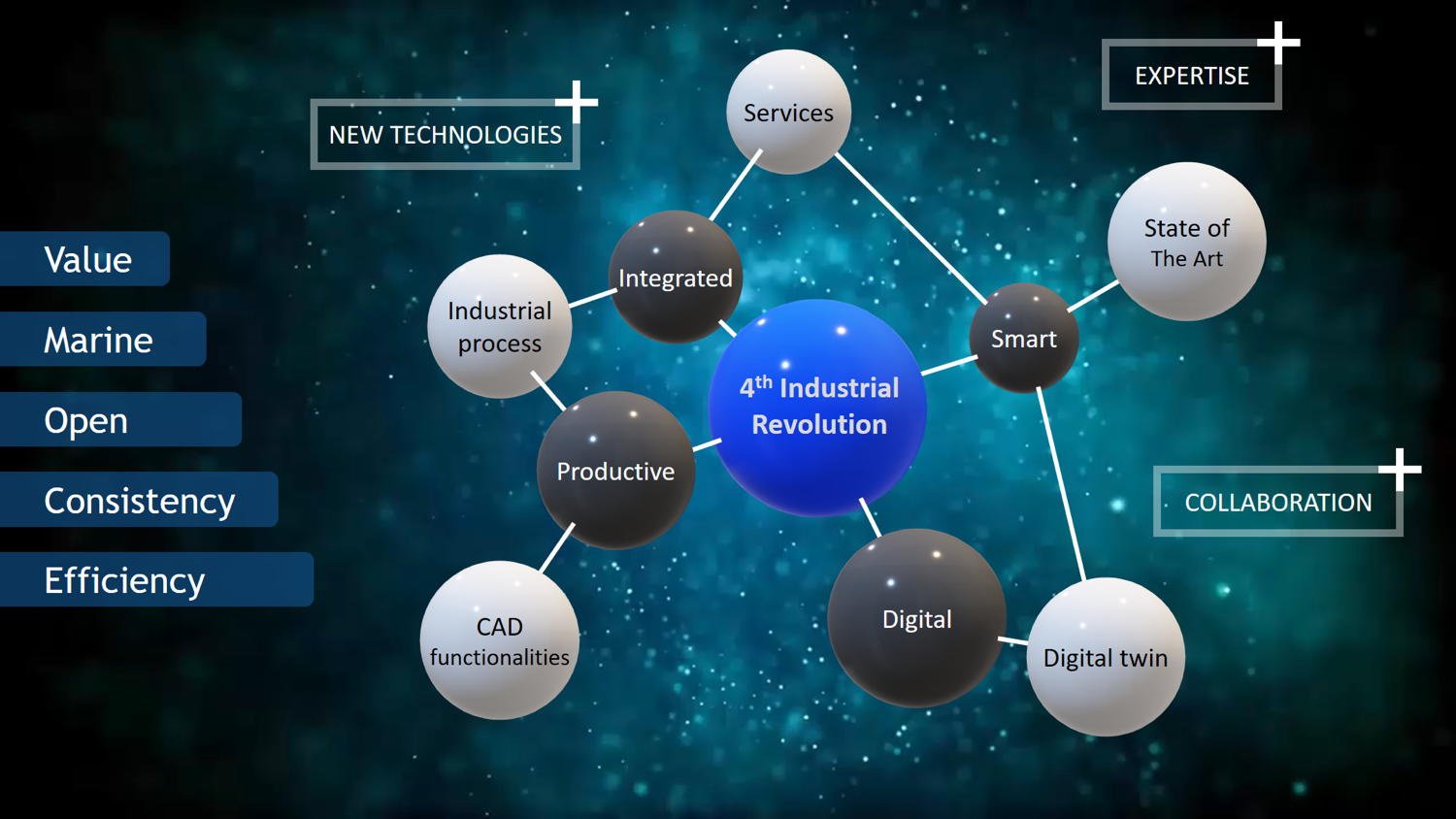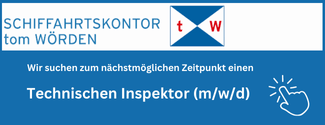Industry 4.0 has favoured the expansion of many technologies with very diffuse application boundaries. Designing and building smart ships will require the use of many of those technologies and they must be used in a consistent way
This consistency will be facilitated when technologies are integrated with Computer Aided Design, Manufacturing & Engineering (CAD/CAM/CAE) Systems. CAD[ds_preview] tool stands at the beginning of the design, but it manages many data to be considered in advance for the further stages of the product lifecycle. These data must be used by technology as Augmented Reality, Virtual Reality and Mixed Reality, which are closely related to the Digital Twin.
Using Internet of Things (IoT) and Digital Twin will generate a large amount of data that will require techniques of Big Data, cloud/edge/fog computing and the use of Artificial Intelligence (AI) to facilitate obtaining results for design, production and operation of smart ships.
Connectivity
Performing all these integrations in an agile manner requires a platform that supports multiple connections to assets allowing different applications the access to the data, and therefore creating and modifying them. Different application must work, in different layers, all of them supported by the basic information layer created by the CAD System in the shipyard. This platform should be secure, but also open to allow distributed work. Work must be tracked in order that all design or process modifications are recorded in an open, transparent, trusted and non-modifiable working method for all stakeholders.
The objective is to use this technological revolution in the design and production phases in order to build efficient, safe and sustainable vessels. The idea is to monitor all those parts in which early detection of events allows us to make the right decisions. In this sense, the available sensors during the early stages of construction of the ship, allow us to identify if the construction of the vessel is according to the design we have created with CAD.
Integration of IoT platform sensors with the CAD product data model will reduce costs, avoid mistakes, and allow trusty decisions in real time from the shipyard, design or operations offices. Currently, CAD solutions can be used in pocket tools, making it the indispensable ally in this new technological revolution.
Shipbuilding process generates a lot of information and data. A priori, it may seem impossible to have all this data in real time, but the new processors, simpler and smaller, with a good connection to the networks, will make this possible. Integration of all technologies for marine business is known as Internet of Ships. Data management is only one aspect of the Internet of Ships, but not the only one.
Internet of Ships
Internet of Ships not only covers design and production stages, but operation lifecycle. Equipment installed in the ship is connected to the Internet of Ships platform to share data during normal operation. This information is used to optimize operation and to anticipate maintenance throughout the entire life of the ship.
Internet of Ships is presented as a solution capable of detecting when a component on a ship is close to fail and must be replaced, when corrosion has reached a certain limit, or when a new painting layer is needed, in short, when a new maintenance is necessary. Internet of Ships reaches this sector to ensure profitable production and safe, efficient and sustainable processes for all types of ships (fishing vessels, tugs, tankers, cargo vessels, ferries, dredgers, etc.).
The architecture of the solution must take into account different levels of connectivity. An internal network where the systems and components of the ship work together to get the best operation possible. Another level of connection is needed to the external world, providing the link from the smart ship to the control platform of the ownership.
This connection will send and receive information necessary for the better operation of the ship. Information necessary for repairing or replacement of components will be transmitted from the components themselves. To enable this approach, the CAD product data model must be able to manage the amount of data generated, knowing the relationship between the components and the receivers of the information shared.
What to come?
The core of Industry 4.0 relies in a 3D product data model, created with CAD tools. The importance of CAD will rather increase than diminish. Digital twins link this model (virtual world) with the real world. This link will exists during the design and manufacturing of the product and will extend to the entire lifecycle of the product. CAD tools, as an important part of this environment, should evolve to be easily linked to these technologies. Future CAD systems must be adapted to a new generation of users that demands a different interfaces and workflows. This will require an important effort.
This big world is now opening. Shipbuilding is starting in it, but the potential is clear and to remain competitive, it is mandatory to study how these technologies can improve processes, resources, workflow, cooperation between stakeholders. The tools are here, now it is necessary to study and analyse our particular maritime case. There is no global solution for all industries, not even a global solution for a particular industry, but digitalization is on hand and it is mature enough to start implementation and be part of our strategy for the future.
Future smart ships or smart shipyards must be connected to IoT, or they will not be smart. New technologies provide affordable solutions for all the needs. On a final note, the envisioned ecosystem encounters some barriers to entry: initial study of requirements, investment and selection of software packages, evaluation of the benefit of the investment, workers with adequate skills, integrators and managers that know the traditional shipbuilding world and the new technologies of the Industry 4.0, among others.
Rodrigo Pérez Fernández, Jesus A. Muñoz Herrero, Sener


















